by Pat Jaquith
pat@westvalleynaturalists.org
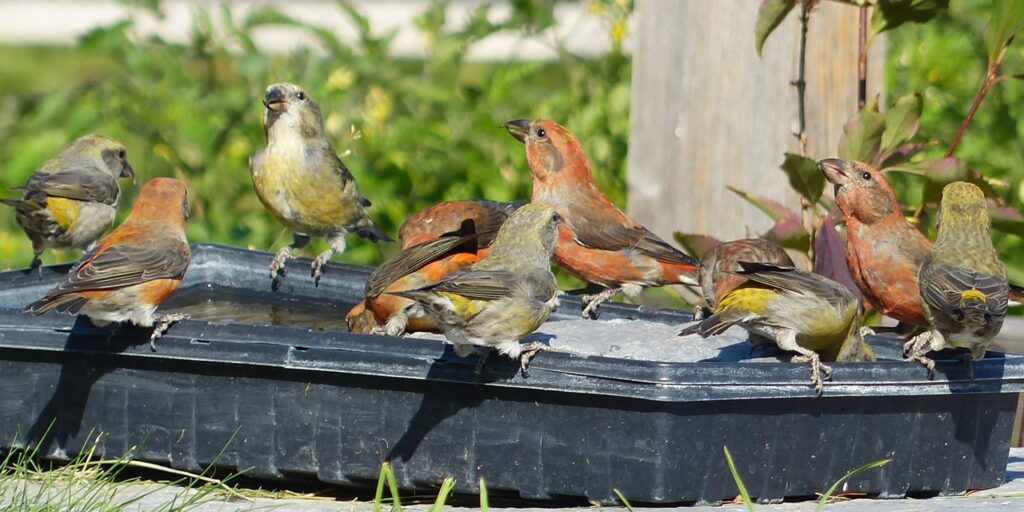
The only species in the world with crossed bills and many other unique traits that are under scientific scrutiny, Crossbills visit our valley sometimes during periods of heavy cone crops on our Douglas fir and Ponderosa pine trees. Though I rarely saw them feeding on cones during the summer of 2020, a flock of Red Crossbills and Pine siskins made daily visits to our yard for water. The rustle of taffeta petticoats alerted me to their arrival as they landed in the larch trees behind the water pans by the garden. The brown-striped attire of juvenile Crossbills gave me some difficulty distinguishing them from the ever-present Pine Siskins when many of them landed in the water pan at once! Read on for more about these colorful, entertaining, unique birds!

Red Crossbills migrate in search of conifers with full cones. When the supply is abundant, they may decide to stay and breed, with little regard for the season. Nestlings have a stout conical bill; when they start learning to feed themselves by prying apart evergreen cones, the repeated motion bends their beak to fit the cones they feed on. This female is feeding her young on 8.08.22. Nestlings fledge about 18 days after hatching and continue to be fed by a parent for another month.
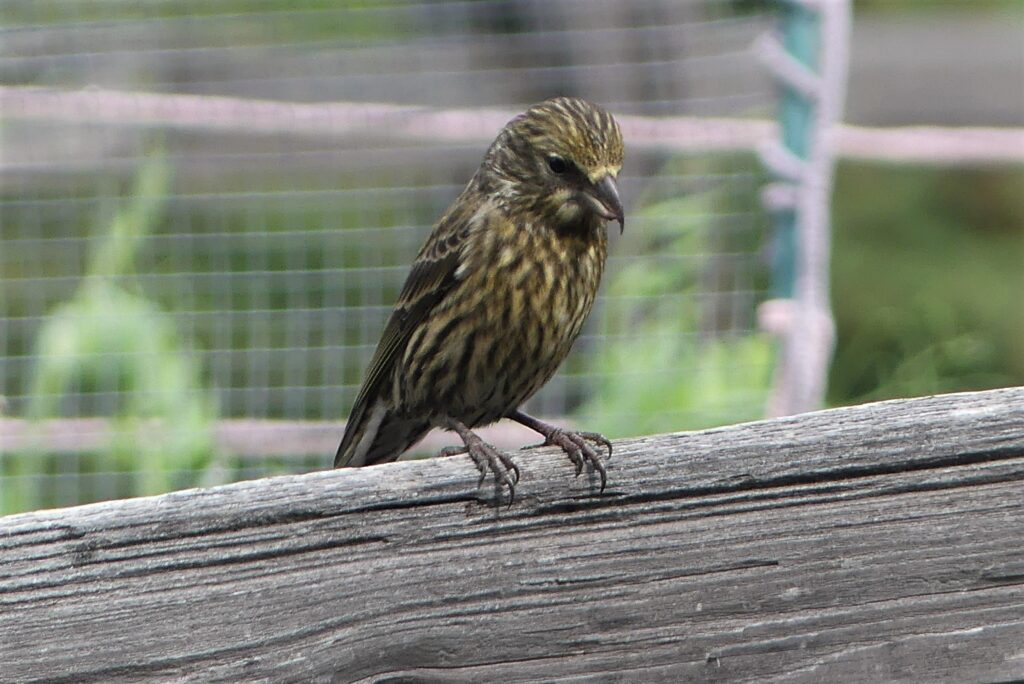
6.15.23 This juvenile is at least six weeks old, the time by which their bill is noticeably crossed and they can forage independently. In a few months, juveniles will have their first set of colorful feathers denoting their sex.

On 9.09.21, a flock of Red Crossbills and Pine Siskins arrived in my yard. Several of them were molting; the one at left is a juvenile female that will have yellow feathers when the striped juvenile feathers are pushed out.

10.29.18 These first year Red Crossbills seemed to be looking for water in the gutters. According to the Sibley Guide, two of them are rare variants with narrow wing bars; at the next (adult) molt, they will have dark wings. Red Crossbills have sexually dimorphic plumage: the males are shades of orange-red while females are yellow/olive colors.
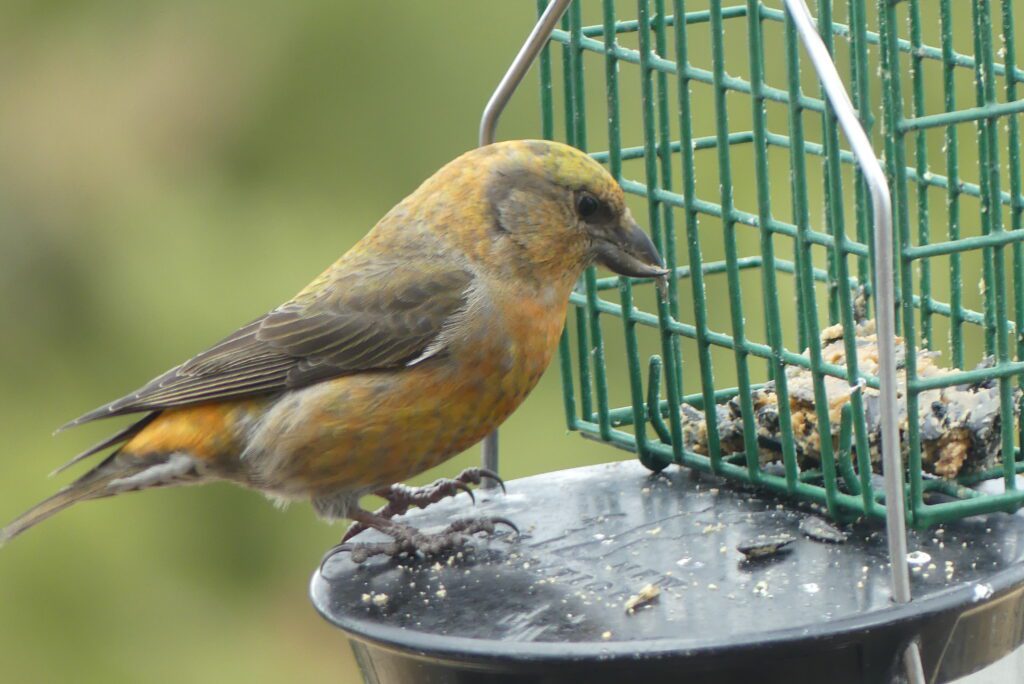
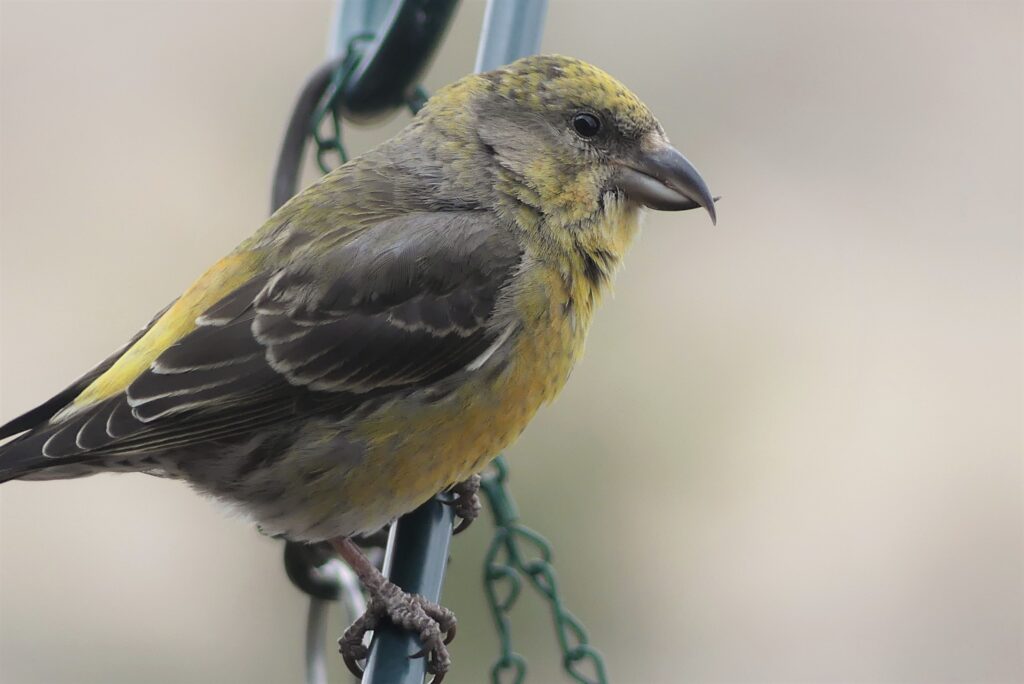
In the winter of 2022, Red Crossbills visited my house two or three times a day and fed at both the suet feeder where sunflower seeds were mixed into a suet cake and from the tube feeders that were filled with sunflower seeds. I observed them scooping up beaks full of crystallized snow, but at that time I didn’t have water available. From research and personal observation, as above, I’ve learned their beaks cross in either direction. From the time they start learning to pry apart the scales on conifer cones, individuals develop their personalized method of working in a spiral from bottom to top; thus, their bill gets formed by their habit. I wonder if this is like humans who are left or right-handed?
From the most current research I have read, there are ‘at least’ 10 different types among the Red Crossbills across North America, as distinguished by their calls. Bills differ in size and shape in relation to their preferred cone species; each different bill produces a different call. However, “to be able to identify all individuals of each call type with 100% certainty, audiospectographic analysis is needed.” It is speculated that some of the different types may someday be determined to be separate species.
There are now three separate species of Crossbills in North America: White-winged Crossbill; Red Crossbill; and the Cassia Crossbill. When the American Ornithological Society met for their annual meeting in 2017, they decided that researchers had found definitive evidence that the Cassia Crossbill is phylogenically distinct from the Red Crossbill and its 10 unique call types.
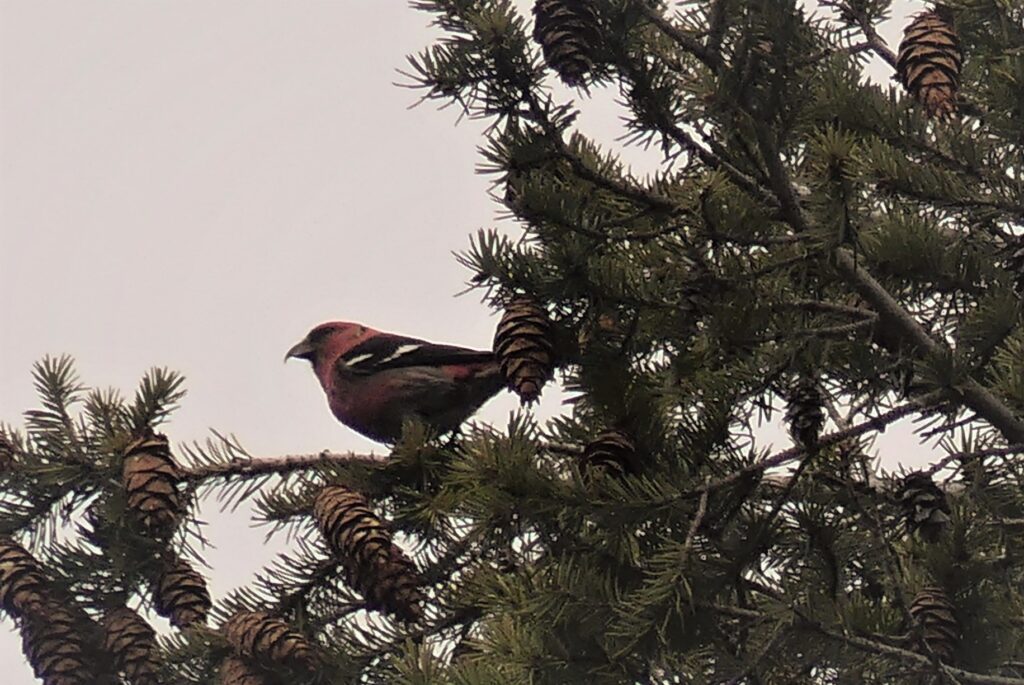
Late in the afternoon March 16,2022, I walked out into a stand of Douglas- fir where suddenly I was pelted by cones! The tree above me was filled with White-winged Crossbills and several Red Crossbills!! To feed on the cones, they detach them, turn them lengthwise along the branch, pin them down with a foot, pry the scales apart with the beak and retrieve the seed with their tongue. They can harvest 3,000 seeds in a day!! The snow-covered ground was littered with cones when they moved to another tree.
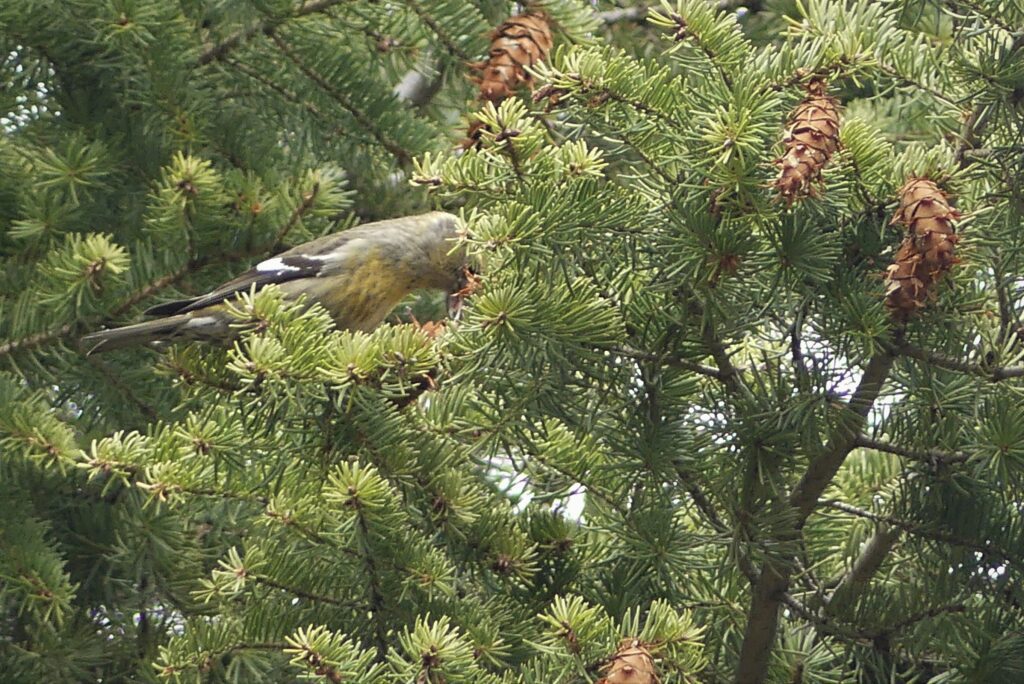

“White-winged Crossbills’ continuous search for spruce cones makes this crossbill the ultimate avian nomad.” – Ken Kauffman’s Notebook
I’ve seen White-winged Crossbills in the West Valley only three times. Having learned that they are constantly on the move in search of spruce (preferred), larch, fir, hemlock, and occasionally pine cones, I feel very fortunate to have had their discarded fir cones rain down on me! The Red Crossbills had been such frequent visitors that year, I wondered if they had encountered the flock of White-winged Crossbills somewhere and offered to show them around!
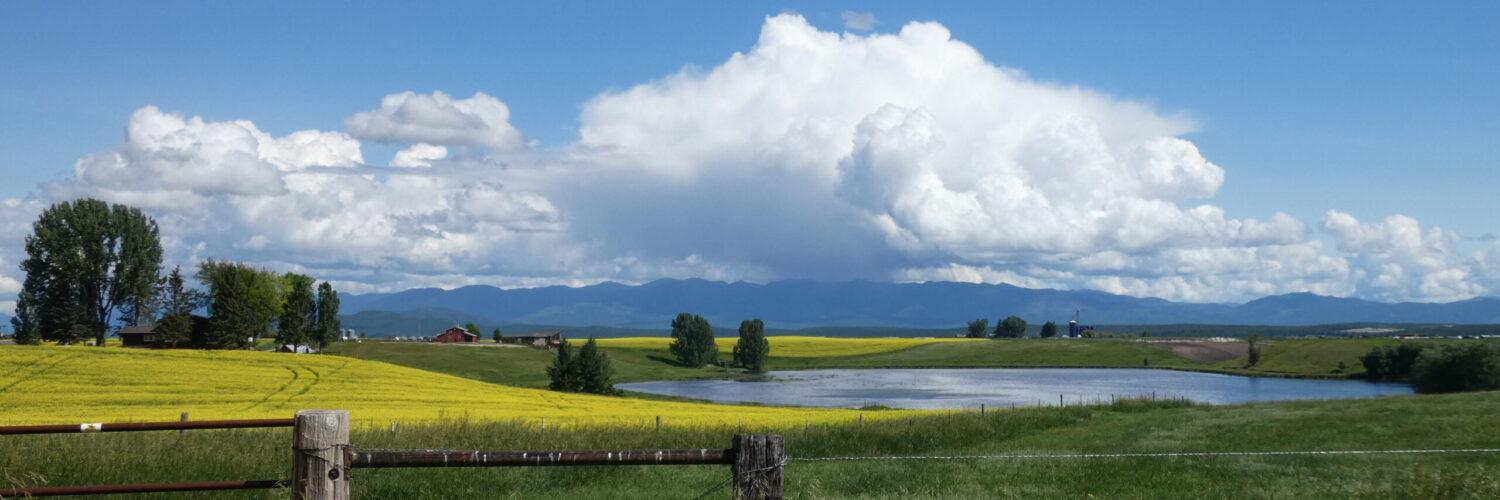
Fascinating! I haven’t seen any cross bills in my area this year (2023). The cone crop must have been less than other years.